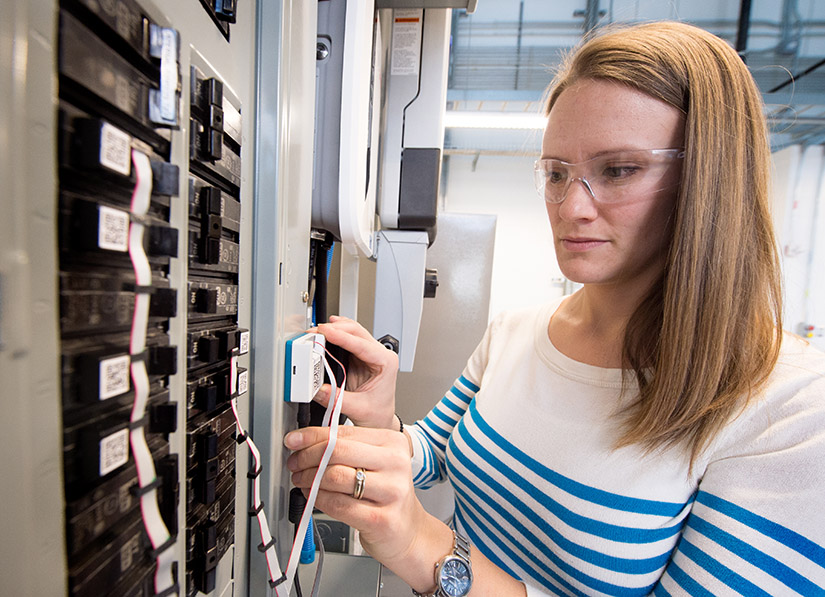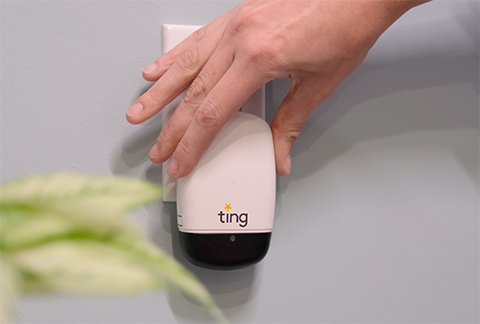IN² at 10 Years: Cohort 1 Participant Turns Up Heat on Fire Prevention
In 2024, the Wells Fargo Innovation Incubator (IN2) celebrates its 10th anniversary under the management of the National Renewable Energy Laboratory’s (NREL’s) Innovation and Entrepreneurship Center. As part of the 10-year celebration, NREL is looking back at IN2’s inaugural cohort to see how the companies have progressed over the last decade.

Everything changed when Whisker Labs co-Founder and CEO Bob Marshall’s sister-in-law’s house burned down due to an electrical fire. The family lost everything, including a pet.
“After that, I challenged our team: Can we come up with something that will prevent electrical fires?” Marshall said.
What Whisker Labs does now is not what the company was aiming for when it joined the first IN2 cohort. NREL Senior Research Engineer Bethany Sparn began working with Whisker Labs shortly after the IN2 program got underway. At the time, Whisker Labs’ sensors attached directly to breakers in the breaker panel, connected by a hub to provide circuit-level power data.
“This was a nonintrusive way of monitoring power consumption at the circuit level,” Sparn said. “After rigorous accuracy testing, we did a demonstration in a Wells Fargo building to study installed performance. It was a very novel idea at the time.”
Sparn, who does much of the lab work related to residential buildings, especially in the sensors and control areas, began testing Whisker Labs’ equipment in a brand-new lab in NREL’s Energy Systems Integration Facility, which also just hit its 10-year anniversary.
In addition to Whisker Labs, Sparn has worked with four other IN2 portfolio companies and is excited to continue that trend.
“I love the IN2 projects because normally we don’t get to work with startups because they don’t have much loose capital,” Sparn said. “But startups are fun. We work with them early on and give them feedback that is really valuable. Startups are like sponges. They are trying to learn everything they can and open to suggestions in a way that many big companies aren’t.”
After a pivot away from the original type of sensor, Marshall says the device Whisker Labs now creates, called Ting, is a supersmart plug.

“You plug it into any outlet in your home and it monitors the entire electrical 'grid' within your home,” he said. “With it, we prevent 80% of electrical fires that can devastate homes. We sample the electricity 30 million times every second of every day. Using machine learning and artificial intelligence, we monitor for faults on the home electrical system that would cause fires.”
While watching over each home, the network of Ting devices also monitors the overall electrical utility grid. With 600,000 installed sensors all over the United States, Whisker Labs can see all the faults that actively occur on the electric utility grid.
“There is no comparable network—we’re collecting about 20 gigabytes of data per second across our fleet of sensors,” Marshall said. “Our sensor network documented that Maui’s grid was struggling to cope with the weather and climate conditions hours before the devastating wildfires.”
It is hopeful this type of information could prevent or lessen the damage from similar large-scale events in the future.
The sensors in today’s Ting device trace their origins to the original sensors tested during the IN2 program.
“Being able to work alongside experts like there are at NREL was extremely helpful,” Marshall said. “If you’re a young startup doing anything anywhere in the energy space, talk to NREL and consider participating in these types of programs. You’re working with the foremost energy experts in the world. All that knowledge and expertise ultimately contributed to the Ting sensor.”
Marshall says Whisker Labs is growing very rapidly, hiring five to 10 people each month. The company is shipping devices to around 50,000 new homes each month. It also has partnerships with insurance companies that give the Ting away for free, including State Farm, Nationwide, and Liberty Mutual.
“They basically ask customers: Do you want to have a Ting sensor to prevent fires in the home?” Marshall said. “It’s completely free for the homeowner. It’s all paid for by our insurance partners because we prevent so many losses and protect their customers, families, and homes. Ting is a win-win for all.”
Whisker Labs is now working with utilities and government agencies to inform them about the weaknesses the company detects on energy grids across the country.
“The grid is becoming an increasingly important focus for our customers and for our company,” Marshall said. “The grid’s got to be able to handle the weather and climate conditions that it’s facing now and in the future. It’s got to have sophisticated monitoring networks to understand where it is struggling in order to fix things before they turn into catastrophic losses. Predict and prevent is much better than react and replace.”
Learn more about the IN2 program.
Last Updated May 28, 2025
